Hyundai Tucson: Oil Temperature Sensor (OTS)
Description
It generates the oil pressure and temperature information (output voltage) to control the pump operation proportional control valve in variable oil pump system.
It measures the oil pressure and temperature discharged from the oil pump and transmits the pressure information to ECM. The ECM controls the proportional control valve to regularly keep the discharged pressure depending on RPM.
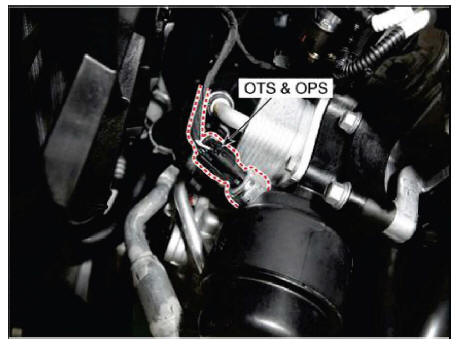
Specification
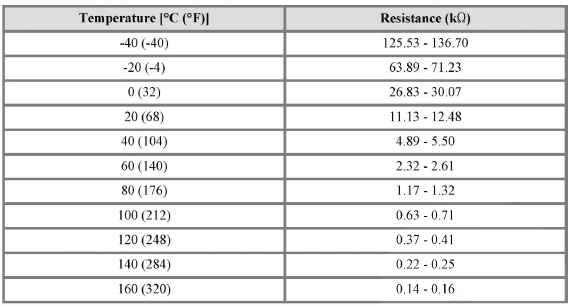
Circuit Diagram
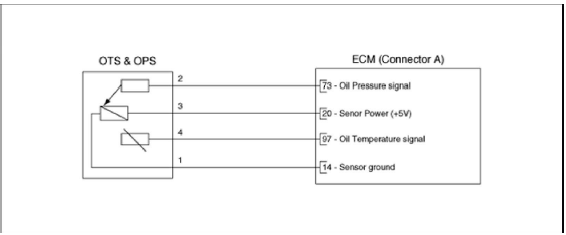
Harness Connector
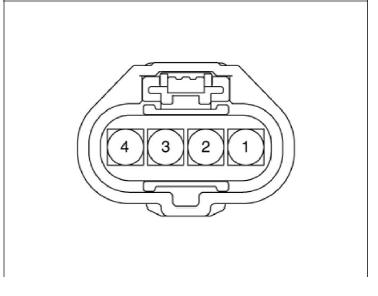
Inspection
- Turn ignition switch OFF.
- Remove the oil pressure & oil temperature sensor.
(Refer to - "Removal")
- After immersing the thermistor of the sensor into engine coolant, measure resistance between the OTS terminals 1 and 4.
- Check that the resistance is within the specification.
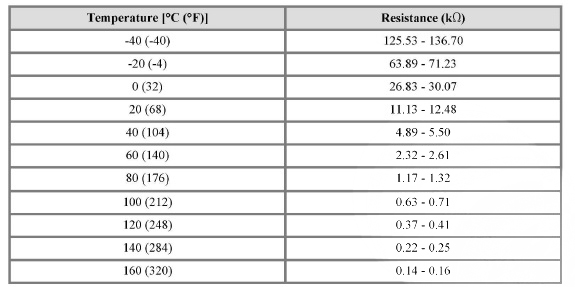
Removal
- Turn the ignition switch OFF and disconnect the battery negative (-) cable.
- Lift the vehicle.
- Remove the engine room under cover.
(Refer to Engine Mechanical System - "Engine Room Under Cover")
- Disconnect the oil pressure & oil temperature sensor connector (A), and then remove the oil pressure & oil temperature sensor (B).
Tightening Torque : 14.7 - 21.6 N.m (1.5 - 2.2 kgf.m, 10.8 - 15.9 lb-ft)
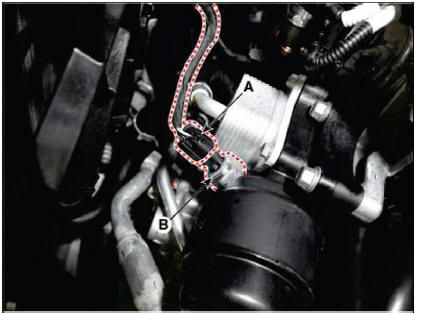
Installation
WARNING
- Install the component to the specified torques.
- Note that internal damage may occur when the component is dropped. In this case, use it after inspecting.
- Apply the sealant to the sensor.
- Insert the sensor in the installation hole and be careful not to damage it during installation.
- Install in the reverse order of removal.
Description
It generates the oil pressure and temperature information (output voltage) to control the pump operation proportional control valve in variable oil pump system.
It measures the oil pressure and temperature discharged from the oil pump and transmits the pressure information to ECM. The ECM controls the proportional control valve to regularly keep the discharged pressure depending on RPM.
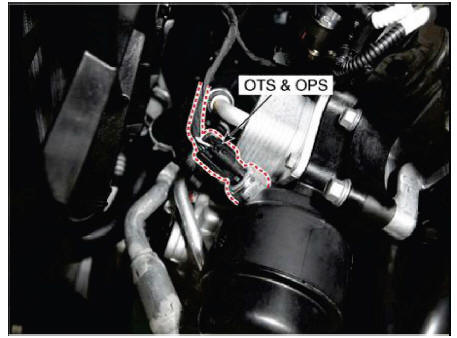
Specifications
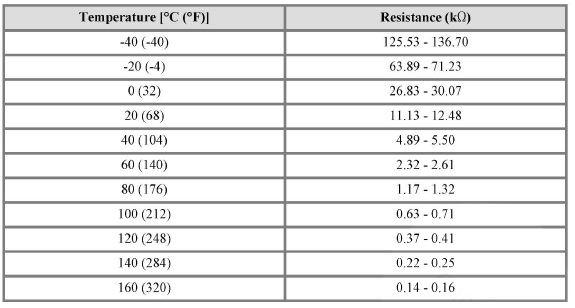
Circuit Diagram
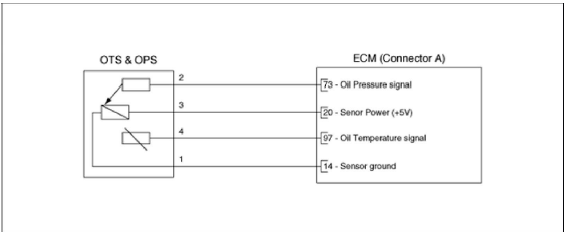
Harness Connector
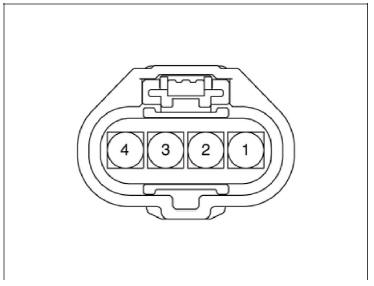
Inspection
- Turn ignition switch OFF.
- Remove the oil pressure & oil temperature sensor.
(Refer to - "Removal")
- After immersing the thermistor of the sensor into engine coolant, measure resistance between the OTS terminals 1 and 4.
- Check that the resistance is within the specification.
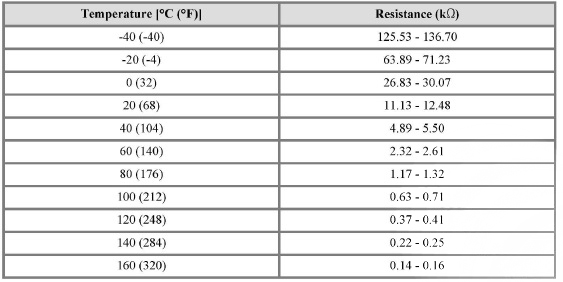
Removal
- Turn the ignition switch OFF and disconnect the battery negative (-) cable.
- Lift the vehicle.
- Remove the engine room under cover.
(Refer to Engine Mechanical System - "Engine Room Under Cover")
- Disconnect the oil pressure & oil temperature sensor connector (A), and then remove the oil pressure & oil temperature sensor (B).
Tightening Torque : 14.7 - 21.6 N.m (1.5 - 2.2 kgf.m, 10.8 - 15.9 lb-ft)
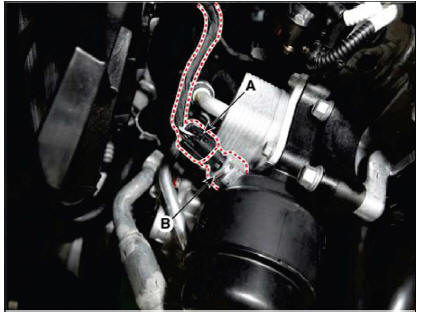
Installation
WARNING
- Install the component to the specified torques.
- Note that internal damage may occur when the component is dropped. In this case, use it after inspecting.
- Apply the sealant to the sensor.
- Insert the sensor in the installation hole and be careful not to damage it during installation.
- Install in the reverse order of removal.
READ NEXT:
 Rail Pressure Sensor (RPS)
Rail Pressure Sensor (RPS)
Description
Installed on the delivery pipe, the Rail Pressure Sensor (RPS) measures the
instantaneous fuel pressure
in the delivery pipe. The sensing element (Semiconductor element) built in the
sensor converts the
pressure to voltage signal.
 Injector - Description
Injector - Description
The GDI injector is similar to a standard injector, but sprays fuel at a much
higher pressure directly
into the combustion chamber and has a swirl disc to get the fuel swirling as it
exits the nozzle. This
aids in atomization of the fuel.
Th
SEE MORE:
 Brake fluid
Brake fluid
Checking the brake fluid level
Check the fluid level in the reservoir
periodically. The fluid level should be
between MAX and MIN marks on the side
of the reservoir.
Before removing the reservoir cap and
adding brake fluid, clean the area
 Manifold Absolute Pressure Sensor (MAPS)
Manifold Absolute Pressure Sensor (MAPS)
Description
Manifold Absolute Pressure Sensor (MAPS) is a speed-density type sensor and
is installed on the
surge tank. It senses absolute pressure of the surge tank and transfers the
analog signal proportional to
the pressure to the ECM. By u
Information
- Home
- Hyundai Tucson - Fourth generation (NX4) - (2020-2023) - Owner's Manual
- Hyundai Tucson - Fourth generation (NX4) - (2020-2023) - Workshop Manual